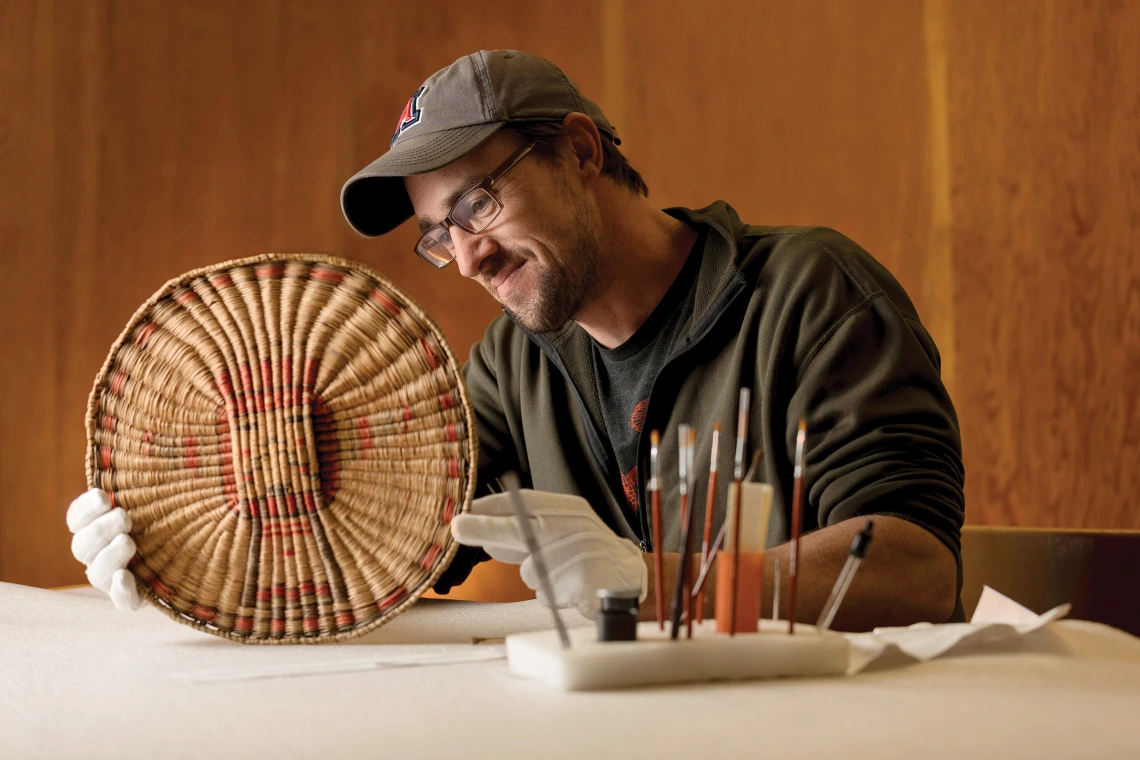Embodying the Hopi Spirit
Collection of rare basketry donated to Arizona State Museum

Over 200 Hopi baskets have joined more than 30,000 specimens in the Arizona State Museum’s unparalleled collection of American Indian woven items, known as the world’s largest, most comprehensive and best documented assemblage of its kind.
The basket donation came from Judith W. and Andrew D. Finger, residents of Dallas and Santa Fe, New Mexico, who previously have donated ceramic vessels to ASM.
“The Finger collection is as meticulously documented as it was lovingly assembled,” says Patrick D. Lyons, director of the Arizona State Museum, which is on the University of Arizona campus. “These baskets are outstanding in terms of their research and teaching value. Each embodies Hopi traditions, stories, iconography and technology. At ASM, they will be preserved and made available for the edification and enjoyment of current and future generations. As a student of Hopi culture myself, I am thrilled by the possibilities for research, exhibits and public programs.”
The 177 wicker, 29 coiled and 3 plaited baskets enhance the museum’s existing collection, which was placed on a list of 61 of America’s Treasures by the National Endowment for the Humanities and given
the moniker “Woven Wonders” in 2006.
Integral to the daily and ceremonial lives of the Hopi, their baskets are among the most appreciated and sought-after art forms of the Southwest. Third Mesa basket weavers are renowned for their wicker work, while Second Mesa basket weavers specialize in coiling.
Both techniques can depict katsinam. The katsina religion dates back at least to the 14th century, and many aficionados of Native American art are familiar with katsina dolls, the carved representations of Hopi spirit helpers created from cottonwood root.
The ASM has more than 4,000 historic and contemporary baskets, and the Finger Collection enhances ASM’s ability to illustrate the many facets and beauty of Hopi culture.
